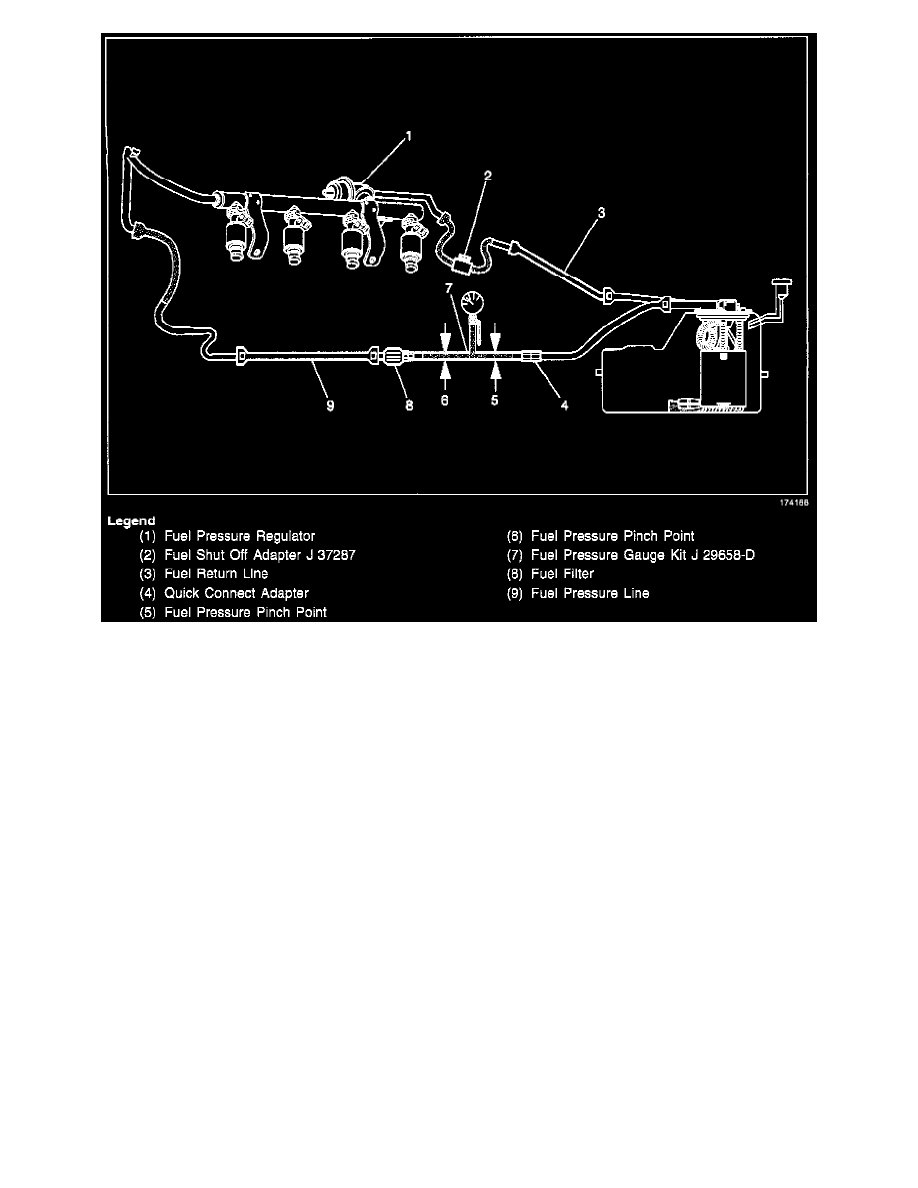Hombre XS Space Cab L4-2.2L CPC (1997)

Description
CIRCUIT DESCRIPTION
When the ignition switch is turned ON, the Powertrain Control Module (PCM) will turn ON the in-tank fuel pump. The in-tank fuel pump will remain
ON as long as the engine is cranking or running and the PCM is receiving reference pulses. If there are no reference pulses, the PCM will turn OFF the
in-tank fuel pump for 2 seconds after the ignition switch is turned ON or for 2 seconds after the engine stops running. The in-tank fuel pump is an electric
pump within an integral reservoir. The in-tank fuel pump supplies fuel through an in-line fuel filter to the fuel rail assembly. The fuel pump is designed
to provide fuel at a pressure above the pressure that is needed by the fuel injectors. A fuel pressure regulator, attached to the fuel rail assembly, keeps the
fuel available to the fuel injectors at a regulated pressure. The unused fuel is returned to the fuel tank by a separate fuel return pipe.
TEST DESCRIPTION
Number(s) below refer to the step number(s) on the Diagnostic Table.
2. To relieve the fuel pressure, refer to Fuel Pressure Release Procedure. When the ignition switch is ON and the fuel pump is running, the fuel
pressure indicated by the fuel pressure gauge should be 284-325 kPa (41-47 psi). This pressure is controlled by the amount of pressure the spring
inside the fuel pressure regulator can provide.
3. A fuel system that drops more than 5 psi in 10 minutes has a leak in one or more of the following areas:
^
The fuel pump check valve.
^
The fuel pump flex pipe.
^
The valve or valve seat within the fuel pressure regulator.
^
The fuel injector(s).
5. Fuel pressure that drops-off during acceleration, cruise or hard cornering may cause a lean condition. A lean condition can cause a loss of power,
